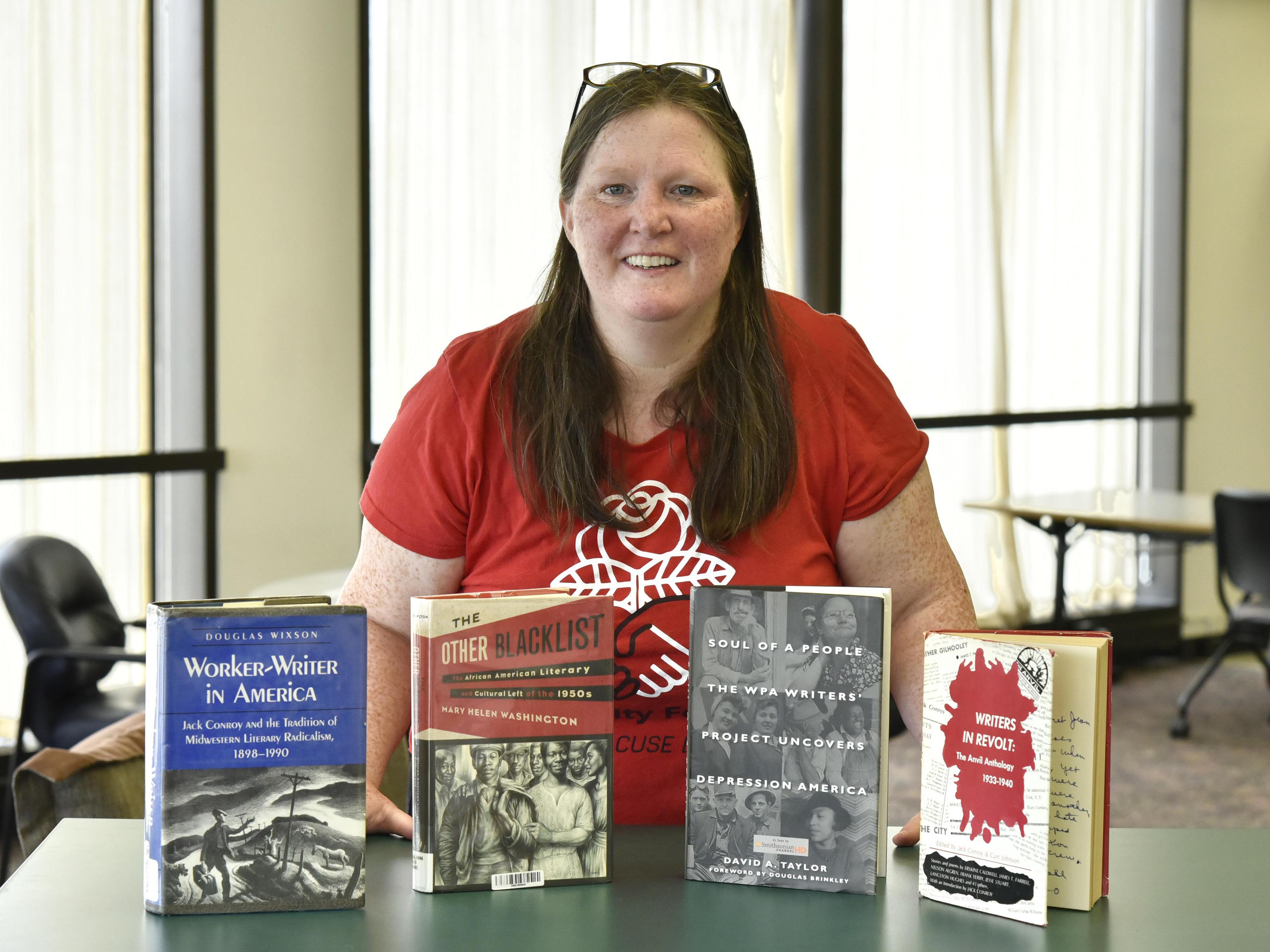Selection for a prestigious National Endowment for the Humanities summer institute will help English and creative writing professor Maureen Curtin learn more about a historic public works writing project -- and how to weave similar storytelling efforts into her efforts.
"The New Deal Era's Federal Writers' Project: History, Politics and Legacy,'' running virtually July 11 to Aug. 6, will connect Curtin with other scholars to explore the project’s literary and artistic output, historical contexts and lasting impact through a variety of presentations, discussions and virtual archive tours.
While researching a book related to Irish-American writers, particularly Jack Conroy, and preparing a conference proposal, “I stumbled into the Library of Congress’ digital records of the America Life Histories Collection of the Federal Writers’ Project (FWP) and specifically into a July 1939 staff conference on industrial folklore,” Curtin recalled.
What especially caught her attention was documentation of Conroy and other notable writers of the period discussing a sequel to “These Are Our Lives,” a landmark FWP collection of 37 interviews with working-class Southerners originally published in 1939.
Created in 1935 under the New Deal’s Works Progress Administration, FWP provided employment for more than 6,500 historians, teachers, writers, librarians and other white-collar workers during the Great Depression, while also providing important documentation and works of civic value.
“They were interviewing ordinary people all over the country, and the writers included Ralph Ellison, who was the first person I ever wrote about,” Curtin said.
That the NEH had a summer seminar on this topic proved of great interest to Curtin, and earning a spot from the competitive application process will open doors for Curtin and her students.
Telling important stories
“We know that journalism has fractured as a field and an industry, and it has had major consequences for everything from local news to democracy, so there has been a push to reconstitute a Federal Writers Project,” Curtin said. “There will be a lot of people looking at this, not just from the point of view of what was the impact on literature and aesthetics after the Federal Writers Project, but what are the politics of it, and what are the institutional legacies.”
While the project elevated folk history and put a lot of talented writers to work, research continues in terms of how it treated racial narratives.
“I think one of the focuses of the summer Institute is to look at what role the Federal Writers Project played in connecting people who were made great migration north and so there's a lot of scholarship being produced around race and racial narratives that show up in some of the guidebooks but are sort of suppressed and other guidebooks,” Curtin said.
This dovetails with her interest in Conroy, who is often disregarded when it comes to Irish-American literature, and whether the collections on Black writers that he and Black co-author Arna Bontemps compiled from interviews had anything to do with it.
In addition to research, Curtin is interested in bringing lessons in storytelling and interviewing into her classes.
“Back around 2011, Artswego did a storytelling project that brought in artists, and for me that was the beginning of trying to get my students to write on their experiences as workers, and I wanted to have them do interviews with people in town who were underemployed,” Curtin recalled.
“But I lacked that kind of training or expertise, so in my application for the summer institute, I said I really want to work with people who have done oral history collection and from whom I could really learn how to do that and bring that to my students so that's a big piece of this as well,” she added.
In her classes, she also addresses activism and organizing, and sees that making connections can be an overlooked part of the process.
“Maybe they can learn more about how to conduct interviews with people in the community in ways that allow them to also develop their own skills as organizers because organizing involves one-on-one talking to people and listening to them,” Curtin said. “Truly being a part of a movement and driving a movement involves knocking on doors and talking to people.”




